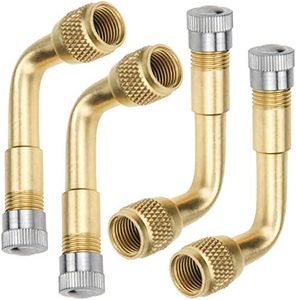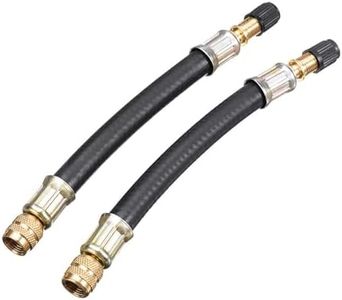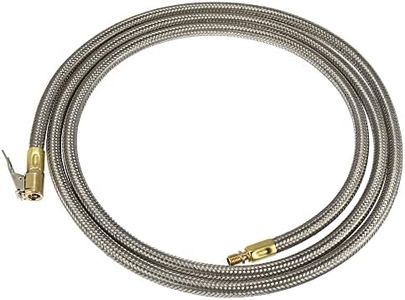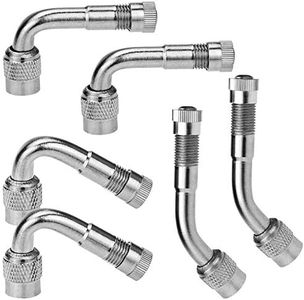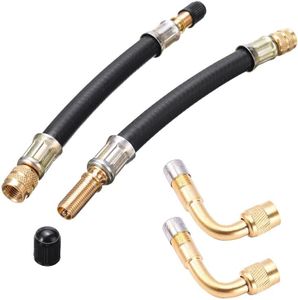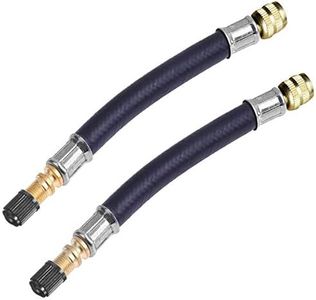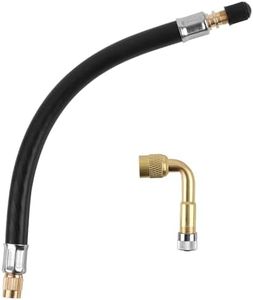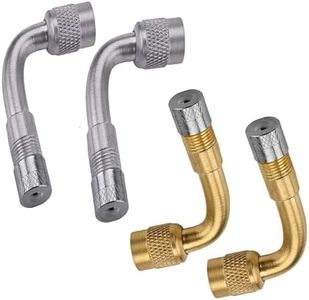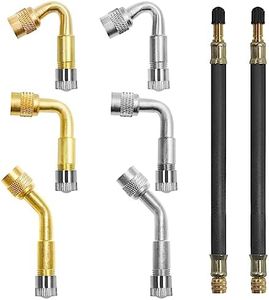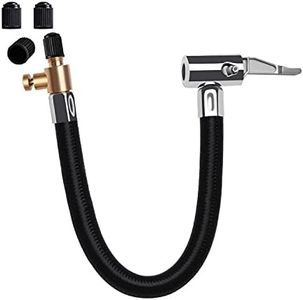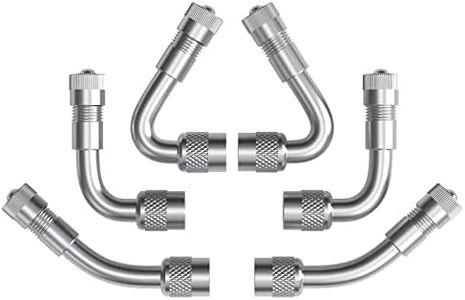We Use CookiesWe use cookies to enhance the security, performance,
functionality and for analytical and promotional activities. By continuing to browse this site you
are agreeing to our privacy policy
10 Best Tire Valve Extension
From leading brands and best sellers available on the web.Buying Guide for the Best Tire Valve Extension
Selecting the right tire valve extension can make inflating and checking tire pressure much easier, especially for vehicles with difficult-to-reach valves, such as RVs, trucks, or dual rear wheel setups. These extensions can prevent frustration and help ensure that your tires are always properly inflated, which is important for safety and tire longevity. When choosing a tire valve extension, you should consider your specific use case, how often you'll need to access the valve, and the environment in which you'll be using it.LengthLength refers to how long the valve extension is from end to end. This spec is crucial because it determines how easily you'll be able to reach the tire valve, particularly if the valve is tucked behind a hubcap or within a dual tire assembly. Valve extensions generally range from a few inches to over a foot in length. Short extensions (2-4 inches) are suitable for minor accessibility improvements, while medium (5-8 inches) and long extensions (9-12+ inches) are best for deep wheel wells or dually setups. To pick the right length, measure the distance from where the valve currently sits to where you want it to be accessed and choose an extension a little longer than that; too short won't help, and too long may cause it to bend or get damaged.
MaterialMaterial tells you what the valve extension is made from, commonly metal (brass or stainless steel) or flexible rubber. This affects both durability and ease of use. Metal extensions are sturdier, resist heat, and are less likely to crack, making them ideal for heavy vehicles or frequent use. Rubber or braided flexible extensions are more pliable and can be ideal if the valve location shifts or if you need to bend the extension around obstacles. Choose metal for longevity and reliability or flexible rubber for maneuverability in tight or awkward spaces.
Connection TypeConnection type refers to how the extension attaches to the existing valve. It can be threaded (screws on tightly), clamp-on (clips in place), or push-on (slides over the valve). Threaded connections offer a secure, long-term fit that is unlikely to leak, making them ideal for vehicles you use often or high-pressure situations. Clamp-on or push-on options are easier to attach and remove, good if you only need an extension occasionally. Your choice depends on whether you want a permanent extension or something to use just now and then.
Air Flow/Pressure RatingThis spec represents the maximum air pressure the valve extension can handle safely. It ensures the extension will not leak or fail when inflating high-pressure tires. Extensions can be designed for low to moderate pressures (up to 60 psi) or high pressures (above 100 psi), which you'd find in heavy-duty vehicle tires. Always choose an extension rated equal to or higher than your tire's maximum inflation pressure. Check your tire's sidewall for this number to guide your decision.
Seal QualitySeal quality refers to how well the extension maintains an airtight connection with the valve and any tire gauge or pump. Good sealing prevents slow leaks and keeps your tires at the correct pressure longer. Some extensions have built-in rubber gaskets or O-rings to help form a tight seal. Look for extensions that specifically mention high-quality or double-seal mechanisms if reliability is a priority, or if you don't check your tire pressure often.
FlexibilityFlexibility is about whether the extension is stiff or can bend. Flexible extensions are made for hard-to-reach or angled valves, letting you position the end of the extension somewhere convenient. Rigid extensions are straight and best for direct, unobstructed routes. Pick a flexible one if your tires’ valves are hidden or blocked by wheel parts. For straightforward access, a rigid extension keeps things simple and sturdy.
